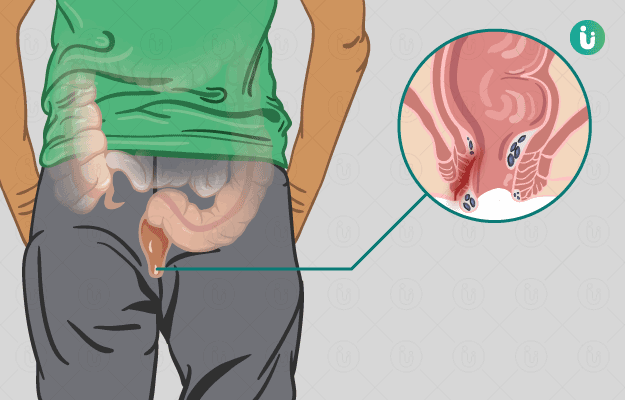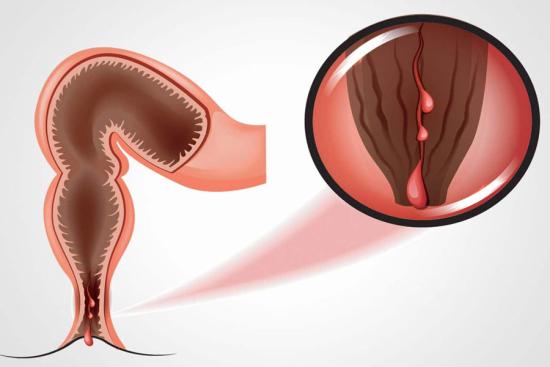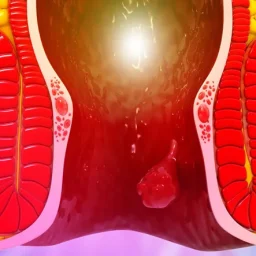
1. Understanding the Infection Risk in Anal Fistula Treatment
The formation of an anal fistula is often the result of an abscess that has failed to heal properly, causing a continuous connection between the anal canal and the skin. The initial infection that leads to the fistula can be a source of ongoing complications, and subsequent surgeries or treatments carry a risk of introducing new infections into the wound or surrounding tissues.
Surgical intervention is typically the primary method of treating anal fistulas. Procedures like fistulotomy, seton placement, flap repair, and LIFT (Ligation of Intersphincteric Fistula Tract) aim to drain the fistula, remove the abnormal tract, and promote healing. However, these procedures create open wounds in an area prone to contamination from fecal matter and bacteria, which can introduce infection into the surgical site.
The risk of infection post-surgery is a significant concern, as it can impede healing, cause further abscess formation, and, in some cases, lead to the recurrence of the fistula. Thus, minimizing infection risk is crucial for ensuring the success of the treatment and promoting long-term recovery.
2. Preoperative Measures to Minimize Infection Risk
Preventing infection starts before the surgical procedure itself. Several steps taken during the preoperative phase can significantly reduce the likelihood of infection following the surgery.
A. Proper Hygiene and Cleansing
Before undergoing surgery, patients must follow strict hygiene protocols to minimize the presence of bacteria in the anal region. This includes:

- Showering or bathing before surgery: Patients are generally advised to shower with a mild antiseptic soap before arriving at the hospital to reduce the bacterial load on the skin.
- Hair Removal: In some cases, hair removal around the anal area may be recommended to prevent contamination during surgery. However, this must be done with caution to avoid skin irritation or microabrasions that can serve as entry points for bacteria.
B. Preoperative Antibiotics
Patients undergoing anal fistula surgery may be prescribed antibiotics before the procedure to help reduce the risk of infection. Preoperative antibiotics are commonly given in the form of a broad-spectrum antibiotic, typically administered about an hour before the surgery. This helps minimize the risk of bacterial contamination during the surgical process.
C. Assessment of General Health
Infection risks are higher in patients with weakened immune systems or underlying health conditions, such as diabetes or Crohn’s disease. Therefore, a thorough preoperative assessment of a patient’s general health is essential. If necessary, adjustments in treatment plans or medications can be made to reduce the risk of infection.
3. Surgical Techniques to Minimize Infection
The technique used to treat an anal fistula plays a significant role in determining the risk of post-surgical infection. Surgeons must be meticulous during the procedure to ensure that infection is minimized and that healing can proceed as smoothly as possible.
A. Choosing the Appropriate Surgical Approach
The choice of surgical procedure depends on the complexity and type of the fistula, as well as the patient’s overall health. For example, a simple fistula may be treated with a fistulotomy, whereas more complex cases may require a flap repair or LIFT procedure.
- Fistulotomy: This procedure involves cutting along the fistula tract to allow it to heal from the inside out. For a fistulotomy to be successful and infection-free, it is crucial that the surgeon properly excises all infected tissue and minimizes damage to surrounding structures, particularly the anal sphincter muscles.
- Seton Placement: Setons are used to drain an infected fistula, and they are typically left in place for weeks or even months. While this method can be effective in promoting healing, it is important to keep the seton clean and free from bacterial contamination. In some cases, the seton is exchanged periodically to prevent infection.
- Flap Repair: For more complex fistulas, a tissue flap may be used to close the fistula tract. The risk of infection can be minimized by ensuring the tissue is adequately prepared and that there is no contamination during the procedure.
- LIFT Procedure: This method involves ligating the fistula tract and carefully dissecting the fistula to prevent further infection. LIFT surgery can be more challenging and requires skilled surgeons to minimize the risk of infection while ensuring that no fecal contamination occurs during the procedure.
B. Minimizing Trauma During Surgery
Excessive trauma during surgery can increase the risk of infection by disturbing healthy tissue and increasing the area exposed to bacterial contamination. Surgeons must aim for precision, minimizing unnecessary tissue damage, and carefully closing the surgical site to reduce the risk of infection. Effective sealing of the surgical site can prevent the entry of bacteria and contaminants into the wound.
4. Postoperative Care: Ensuring Proper Healing and Infection Prevention
Proper postoperative care is essential to preventing infection after anal fistula surgery. The first few weeks following surgery are critical in ensuring that the surgical site heals effectively without complications.

A. Wound Care and Hygiene
The wound site must be kept clean and dry at all times to minimize infection risk. Patients should be advised on how to care for the surgical site, including:
- Cleaning the area gently: After each bowel movement, the area should be cleaned with mild, unscented soap and water. Patients should avoid harsh scrubbing or using irritating products, which can disrupt the healing process.
- Using Sitz Baths: Sitz baths, where patients sit in warm water, are commonly recommended to soothe the anal area, reduce inflammation, and promote healing. Sitz baths can also help prevent infection by keeping the area clean and improving blood flow to the surgical site.
- Avoiding Strain and Pressure: Patients should avoid heavy lifting and activities that put undue pressure on the anal region. Straining can open the surgical site, increase the risk of infection, and disrupt healing.
B. Antibiotic Therapy
Postoperative antibiotics may be prescribed to prevent infection, especially if the patient has a higher risk of developing an infection. These antibiotics are typically continued for a short period after surgery to ensure that any residual bacteria are eliminated before they can cause complications.
C. Monitoring for Infection Signs
It is crucial for both patients and healthcare providers to be aware of the signs of infection following anal fistula surgery. Symptoms such as increased pain, swelling, redness, fever, or unusual discharge from the wound site should prompt immediate consultation with a healthcare provider. Early detection of infection is key to preventing further complications.
D. Dietary Modifications
A high-fiber diet is essential for patients recovering from anal fistula surgery. Fiber helps maintain soft stools and reduces the risk of constipation, which can put strain on the healing site and increase the risk of infection. Proper hydration and a balanced diet can also support immune function and help prevent infections.
E. Managing Underlying Conditions
Patients with underlying conditions such as diabetes, Crohn’s disease, or other immunocompromising conditions should be carefully managed to reduce the risk of infection. For example, blood sugar levels should be controlled in diabetic patients, and any flare-ups of Crohn’s disease should be managed with medications as necessary. These conditions can compromise the immune system, making it harder for the body to fight off infection.
5. Lifestyle Modifications to Prevent Infection
Certain lifestyle habits can increase the risk of infection following anal fistula surgery. Encouraging patients to adopt healthy habits can significantly reduce the likelihood of complications.
A. Smoking Cessation
Smoking has been shown to impair the immune system and reduce blood flow to tissues, which can delay healing and increase the risk of infection. Smoking cessation is recommended for all patients undergoing anal fistula treatment to improve recovery and reduce the risk of postoperative complications.
B. Maintaining a Healthy Weight
Obesity can increase the risk of infection by impairing circulation and putting additional pressure on the surgical site. Encouraging patients to maintain a healthy weight through proper diet and regular exercise can reduce these risks and support the healing process.
6. When to Seek Medical Attention
Even with the best preventive measures, complications can arise. It is important for patients to know when to seek medical attention after surgery. Signs that indicate an infection or other complications include:
- Persistent or increasing pain at the surgical site
- Redness, swelling, or warmth around the wound area
- Fever or chills
- Foul-smelling or excessive discharge
- Difficulty passing stool or incontinence
Prompt medical intervention can help address any issues early and prevent more serious complications.
The treatment of anal fistulas involves careful surgical procedures and a comprehensive approach to postoperative care. Minimizing the risk of infection is crucial for ensuring a successful recovery and preventing complications such as recurrence or further abscess formation. By employing strategies such as proper hygiene, preoperative antibiotics, appropriate surgical techniques, diligent wound care, and healthy lifestyle habits, patients can significantly reduce their risk of infection.
With effective management and close monitoring, the risk of infection can be minimized, allowing patients to heal properly and return to their normal lives. A holistic approach to the treatment and care of anal fistulas, with a focus on both physical and preventive measures, ensures the best possible outcomes for patients.



